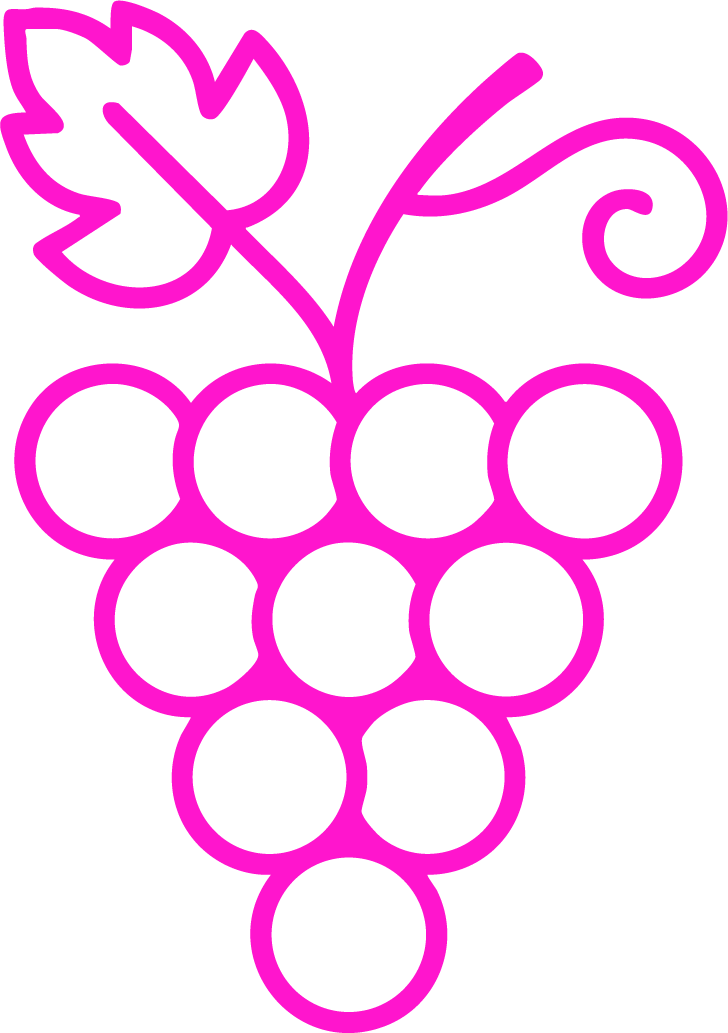Merlot
🔊 Pronunciation: mer-loh
🔍 Quick Summary
Merlot is one of the world’s most popular red grapes—loved for its soft texture, ripe fruit, and approachability in both blends and single-varietal wines.
📜 History
Origin: First mentioned in the late 1700s in Bordeaux, France — likely a natural descendant of Cabernet Franc and Magdeleine Noire des Charentes..
Name comes from "merle" (blackbird): A nod to the bird’s love for ripe Merlot grapes.
Favored in Bordeaux’s Right Bank: Especially in Pomerol and Saint-Émilion, where it thrives in clay-rich soils.
Key to Bordeaux blends: Adds plushness and plum to Cabernet’s structure.
Spread globally in the 1990s: California and Chile embraced Merlot’s round, fruit-forward charm—then faced backlash from oversaturation and Sideways infamy.
🧠 What to Know
Merlot’s versatility and plushness make it both a beloved solo act and blending powerhouse.
Soft tannins = smooth drinking: Ideal for those newer to red wine.
Ripens early: Performs well in cooler climates where Cabernet may struggle.
Chameleon grape: Can be light and silky or rich and full-bodied depending on terroir and winemaking.
Often oak-aged: Vanilla, spice, and mocha tones are common.
Blending role: Key in Bordeaux-style blends with Cabernet Sauvignon and others.
📍 Where It’s Found
Merlot is grown worldwide but shows distinct character by region.
🇫🇷 Right Bank Bordeaux – Clay soils + cool climate = Elegant, age-worthy reds
Moderate | 68–77°F (20–25°C)
🇺🇸 Napa Valley, California – Volcanic + alluvial soils + warm climate = Plush, powerful wines
Warm | 80–90°F (27–32°C)
🇺🇸 Washington State – Basalt + silt-loam + sunny days = Bright fruit, fresh acidity
Warm days, cool nights | 75–85°F (24–29°C)
🇮🇹 Tuscany (as part of Super Tuscans) – Clay + limestone + Mediterranean warmth = Structured and bold
Warm | 77–88°F (25–31°C)
🇺🇸 Chile (Central Valley) – Alluvial soils + dry heat = Juicy, affordable styles
Warm | 79–86°F (26–30°C)
👅 Flavor & Style
Merlot is lush and fruit-forward with silky tannins, ranging from easy-drinking to cellar-worthy.
Color: Deep ruby to garnet
Aromas & Flavors:
Primary: Plum, black cherry, raspberry, blueberry
Secondary: Mocha, vanilla, baking spice (from oak)
Tertiary: Tobacco, leather, dried herbs (with age)
Structure:
Body: Medium to full
Tannin: Soft to moderate
Acidity: Medium
Alcohol: Typically 13–15%
🛠 Winemaking Notes
Winemakers use Merlot’s softness and fruit to build either plush solo wines or blends with more structure.
Oak aging is common: French or American oak lends spice and depth.
Blended often: With Cabernet Sauvignon, Cabernet Franc, or Malbec for balance.
Cold soaking: Enhances color and fruit intensity..
Single varietal or blend: Styles range from light and fresh to deep and muscular.
🍽 Food Pairing Ideas
Pairs well with savory dishes and smooth textures that complement its plushness.
Savory: Roast chicken, pork tenderloin, meatloaf, mushroom burgers
Cheese: Brie, Camembert, mild blue cheese
Unexpected: Pizza with truffle oil, lentil stew, barbecue tofu
🔗 Related Topics to Explore
🍇 Cabernet Franc – Merlot’s herbal, structured parent
🌍 Right Bank Bordeaux – Where Merlot rules the blends
🌱 Malolactic Fermentation – Creamy mouthfeel in soft reds
⚗️Clay Soils – Water-retentive = early ripening, plush fruit



